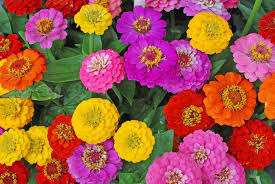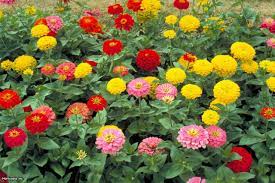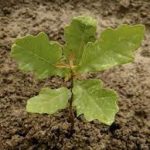HOW TO GROW ZINNIAS
Easy annuals that can fill your garden with the colour of one of the most simple annuals to cultivate Zinnia flowers provide the most vibrant colours everywhere they are. The blooms last through late spring to the first frost of autumn. Hummingbirds and butterflies are attracted by the colourful flowering plants that appear in almost every bright colour that you can think of. They can multiply and with a high degree of consistency and are a good option for those who are just beginning to grow flowers. Combine the low-maintenance requirements and the many shapes and sizes they come in, and you’ll be able to find them.

Characteristics
Zinnias are available in various flower shapes, including daisies, stars, dahlias and buttons, spiders, domes and quill-leaf-cactus shapes. You can also find singles, semi-doubles and even doubles within these forms.
Toxicity:
Zinnias do not risk growing around animals since they are not toxic to cats, dogs, and horses.
PLANTING ZINNIA SEEDS
The best time to plant
If there’s no chance of frosts, the zinnias can be planted at any time until the final day of June. It’s actually ideal for growing several times in 2-to to three weeks intervals to the end of June to ensure that they bloom continuously throughout the autumn.
Planting:
Zinnias are the best to start from seeds and can be planted straight into the ground when the danger of frost has gone. If you’d like to jump on them and begin indoors earlier, you can use the peat pot or another container that can be placed directly into the ground because zinnias tend to be difficult to transplant. Plant seeds 1/4-inch in depth and follow the spacing guidelines on the seed packet. Provide them with sunlight and water, and seedlings will start popping up within 4-7 days.

Reduce the spacing between 6 and 18 inches (depending on the variety) by cutting off the soil line using scissors. (Tip pulling out seeds could cause root damage to the ones left.) Zinnias are fast-growing, and you’ll be blessed with beautiful, vibrant blooms within 60 days.
CARE
Pruning:
Suppose you’re looking for taller varieties you’d like to utilize for cutting flowers. In that case, Floret Flower Farms recommends cutting the flower’s centre at about 18 inches high. Even though the process “feels pretty counterintuitive at the time, but it will encourage plants to begin branching low and produce much longer stems.” The blooms that are not in full colour are best deadheaded to promote and extend the flowers.
Soil:
Although zinnias don’t have a lot of choices regarding the soil they grow in, they prefer well-drained, fertile, and humus-rich and have a pH range between 5.5 and 7.5
Amendments & Fertilizer:
Incorporate compost into the area where zinnias will be planted to improve the soil. A small amount of a well-balanced fertilizer could be applied. However, it isn’t always required.
Watering:
Regularly water to a maximum of around 1 inch each week. While they tolerate dry conditions, they’ll thrive with constant humidity within the soil. Be sure to keep moisture from the plant by watering the roots of the plant. This helps ensure that your plant is healthy and avoids disease.
Propagation:
Seeds are easily saved by letting the flower dry entirely on the plant. Take out the seeds by gently crushing the dried flower head. The seeds should be kept in a dry, fabulous location to be planted the following spring. Be aware that hybrid seeds plants might grow differently from that of the plant parent.
Diseases and Pests:
Bacterial and fungal spots, powdery mildew and bacterial wilt may cause problems for the zinnias.Maintaining the foliage dry and allowing for an airflow that is good will aid in the prevention of. Zinnias are also a host of caterpillars, mealybugs or spider mites. It is recommended to eliminate caterpillars with your hands. However, spider mites, as well as mealybugs, may be treated with soap for insecticides.Try cultivars of the Profusion series to increase protection against powdery mildew.





